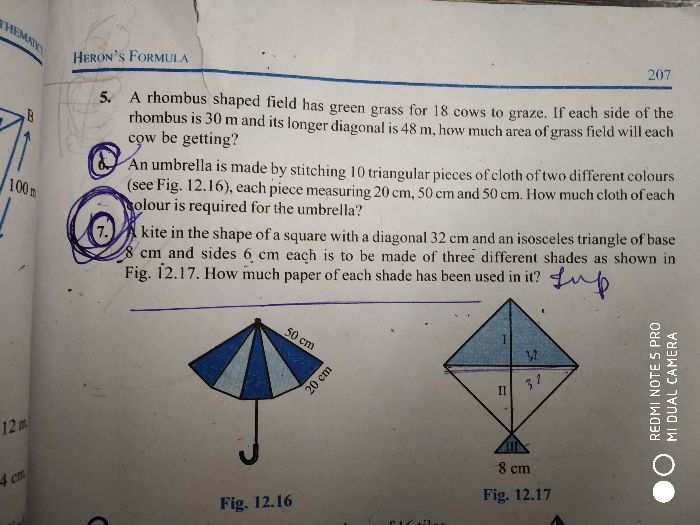CBSE Class 9 Answered
Having drawn your isosceles triangle with the length of the equal sides equal to 5 cm, the width of the base and the altitude equal to 2.x and h respectively, then we may write for the area A of the triangle
A = h.x = 12 cm²
so that h = 12/x
and from Pythagoras applied to either of the right-angled triangles
x² + h² = 5²
Substituting for h from above gives
x² + (144/x)² - 5² = 0
Multiplying through by x² and rearranging
x4 + 144 25x2 = 0
which is a quadratic in z = x² with solutions
z2 -25z + 144 = 0
z = [25 ±?(25² - 4*144)]/2
giving z = [25 ±7]/2 = 16 and 9
so that the solutions for x are 4 and 3, both of which are valid,
The base of the triangle may therefore be either 2.x = 8 cm or 6 cm in length.
As you might expect, the altitude h takes the values 8 cm and 6 cm respectively,
so that both triangles have areas of 12 cm².











